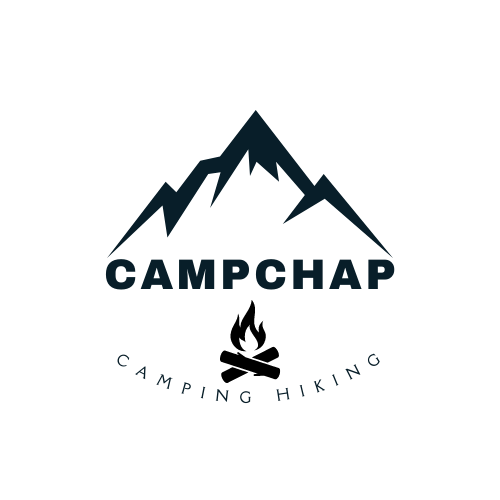“How Long Should A Camp Be?” is your ultimate guide to planning the perfect camp duration. From weekend getaways to extended wilderness adventures, this article delves into the ideal length of time you should spend at camp to maximize enjoyment and ensure a fulfilling experience. You’ll discover key factors to consider, such as your goals, the activities available, and the needs of the campers, helping you tailor the perfect camping trip every time. Whether you’re a seasoned camper or a first-timer, this guide will help you strike the right balance between adventure and relaxation, ensuring you leave with lifelong memories.
How Long Should A Camp Be?
Have you ever wondered how long a camp should last? Whether you’re planning a camping trip with friends or organizing a youth summer camp, determining the right duration is crucial. The length of a camp can significantly impact the overall experience, making it essential to consider various factors to find the perfect balance. So, let’s dive into how long your camp should be and explore the elements that influence this decision.

Understanding Your Objective
When deciding on the duration of your camp, the first step is to understand your objective. Different types of camps cater to different needs and purposes, which will determine how many days or weeks are necessary to achieve your goals.
Types of Camps
Before you settle on a duration, it’s important to know what type of camp you’re looking to organize or attend. Here are some common categories:
1. Summer Camps: These can range from one week to several weeks, usually catering to children and teens with a variety of activities.
2. Weekend Camps: Perfect for quick getaways, usually spanning from Friday evening to Sunday afternoon.
3. Specialized Camps: Focus on specific skills or interests, such as music, sports, or academics, and can last from a few days to a couple of weeks.
4. Family Camps: Designed for families to spend quality time together, often lasting for a weekend or up to a week.
Match Duration to Objectives
To help you choose the right duration, ask yourself the following questions:
-
What is the primary goal of the camp? Is it to impart specific skills, provide a recreational break, or foster social connections? The complexity and depth of your objective will guide you towards a suitable time frame.
-
Who are the participants? Younger children might benefit from shorter camps, while teenagers or adults may enjoy and sustain engagement in longer programs.
-
What resources are available? Budget, staffing, and facilities will also influence how long your camp can feasibly run.
Participants’ Age and Experience Levels
Understanding your participants’ ages and experience levels is essential in determining how long your camp should be. Different age groups and experience levels have distinct needs and tolerance levels for extended camping experiences.
Age Groups
-
Young Children (Ages 5-10): Typically, younger children have shorter attention spans and may experience homesickness quickly. A camp duration of 2-4 days is often ideal for this age group.
-
Preteens and Teenagers (Ages 11-17): This group can handle longer camps, usually ranging from 1 to 3 weeks. They are better at adapting to new environments and can engage in more complex activities.
-
Adults: Adults generally have the capacity for longer camps, especially if the focus is on skill development or in-depth learning. Camps for adults can last from a week to several weeks, depending on the intensity and purpose.
Experience Levels
-
Beginners: For participants new to camping or the specific activities of the camp, shorter durations of 3-7 days are suitable to ensure they are not overwhelmed.
-
Intermediate: Those with some prior experience can handle medium-length camps ranging from 1 to 2 weeks, allowing enough time to build on their existing skills.
-
Advanced: Experienced campers or participants can engage in longer, more immersive camps that last for several weeks, offering ample opportunity for mastery and complex challenges.
Activities and Program Content
The type of activities and the depth of the program content are significant determinants of your camp’s duration. Camps packed with diverse, interactive, and intensive activities may require longer durations to ensure participants gain the most from their experience.
Types of Activities
Recreational Activities: These are casual and fun activities like swimming, hiking, and arts and crafts. Camps focused on recreation may have a more flexible duration, from a few days to several weeks, depending on the variety of activities offered.
Skill-Based Activities: Camps centered around developing specific skills, such as music, sports, or coding, may need more time. A 1-2 week duration allows participants to practice, receive feedback, and see noticeable improvement.
Educational Programs: Camps with an academic focus often require more extended periods. A minimum of 2-3 weeks is preferred for in-depth learning and retention.
Balancing Activity Intensity
Creating a balanced schedule is key to any camp’s success. Here’s a simple table to help you determine a balanced activity-to-rest ratio based on a potential 7-day camp schedule:
| Day | Morning Session | Afternoon Session | Evening Session |
|---|---|---|---|
| Day 1 | Arrival & Setup | Orientation | Campfire Social |
| Day 2 | Hiking | Skill Workshop 1 | Free Time |
| Day 3 | Educational Talk | Team Sports | Movie Night |
| Day 4 | Skill Workshop 2 | Art and Crafts | Games Night |
| Day 5 | Field Trip | Relaxation Time | Talent Show |
| Day 6 | Community Service | Swimming | Bonfire Night |
| Day 7 | Farewell Brunch | Pack Up & Leave | – |
Ensure that each day has a mix of intensive activities, rest periods, and social interactions to keep participants engaged and energized.
Health and Safety Considerations
Safety is paramount when deciding how long a camp should be. Prolonged durations increase the chances of health issues and require more medical planning and resources.
Health Concerns
Disease and Illness: Longer camps mean more opportunities for illnesses to spread. Prepare with adequate medical supplies, trained staff, and protocols for dealing with common camp illnesses.
Mental Health: Homesickness, stress, and social dynamics can impact campers, especially in extended programs. Regular check-ins and mental health support should be available.
Safety Measures
Training: Staff should be adequately trained in first aid and emergency procedures.
Facilities: Ensure that your camp facilities are equipped for the duration of your camp, providing enough clean water, nutritious food, and sanitary conditions.
Weather Preparedness: Especially for outdoor camps, be ready for various weather conditions. Longer camps might encounter more unpredictable weather, requiring comprehensive emergency plans.

Cost and Budget
Financial considerations will significantly impact the duration of your camp. The longer the camp, the higher the costs for food, staff, equipment, and facilities.
Budget Allocation
Here’s a rough breakdown to help you understand how to allocate your budget based on a sample 7-day camp:
| Expense Item | Allocation (%) | Example Cost ($1,000 Budget) |
|---|---|---|
| Staff Salaries | 25% | $250 |
| Food and Beverages | 20% | $200 |
| Equipment and Supplies | 15% | $150 |
| Facility Rental | 20% | $200 |
| Activities and Materials | 10% | $100 |
| Medical Supplies | 5% | $50 |
| Miscellaneous | 5% | $50 |
Fundraising and Sponsorship
Consider seeking sponsorships or organizing fundraising events to supplement your budget. This could enable you to extend your camp’s duration without compromising on the quality of experience.
Environmental Impact
Camping experiences can have significant environmental impacts. The longer your camp runs, the greater its ecological footprint.
Sustainable Practices
Leave No Trace: Incorporate Leave No Trace principles, educating campers on minimizing their impact on the environment.
Waste Management: Plan for waste disposal and recycling to manage the increased waste generated over a longer duration.
Resource Use: Balance resource-heavy activities with more sustainable options to lessen the camp’s environmental impact.
Feedback and Evaluation
Another important consideration is gathering feedback both during and after the camp. This can give you valuable insights into whether the duration was appropriate and what might be adjusted for future camps.
During-Camp Feedback
Daily Check-Ins: Short daily surveys or informal check-ins can help gauge how participants are feeling and whether they feel the camp duration is fitting.
Staff Observations: Staff can provide insights into participant engagement and energy levels, offering a different perspective on how the duration is working.
Post-Camp Evaluations
Surveys: Distribute post-camp surveys to gather detailed feedback from participants about the duration and overall experience.
Debrief Sessions: Hold debrief sessions with staff to discuss what went well and what could be improved regarding the duration and structure of the camp.
Conclusion: Striking the Right Balance
Determining the ideal camp duration requires balancing multiple factors, including objectives, participants’ needs, activities, safety, budget, and environmental impact. There’s no one-size-fits-all answer, but with careful planning and consideration, you can design a camp that provides a fun, enriching, and memorable experience for all participants.
Recap of Key Points:
- Understand Your Objective: Align the camp duration with the camp’s primary goals.
- Consider Participants’ Age and Experience Levels: Tailor the length to suit the demographic needs.
- Plan Activities and Program Content: Ensure a balanced and engaging schedule.
- Prioritize Health and Safety: Plan for both physical and mental well-being.
- Manage Cost and Budget: Allocate resources wisely to support the camp’s duration.
- Minimize Environmental Impact: Adopt sustainable practices.
- Gather Feedback: Use evaluations to improve future camps.
With these insights, you’ll be better equipped to decide on the perfect length for your next camp, ensuring an unforgettable experience for everyone involved. Happy camping!
